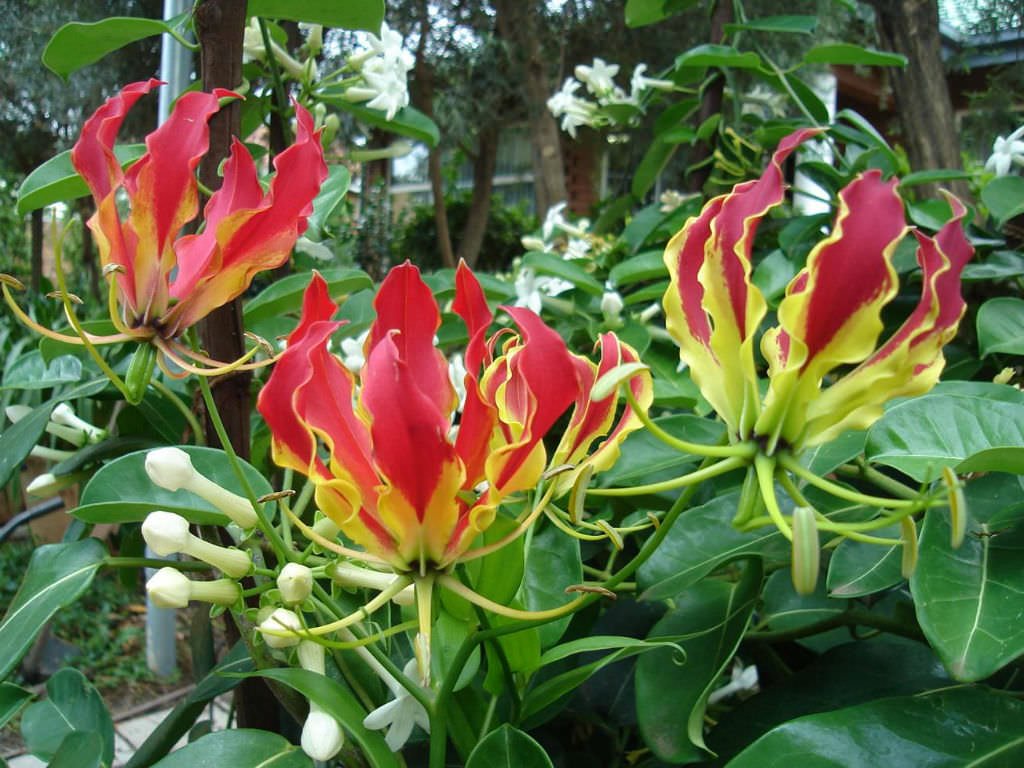Common Names Of Glory Lily
Gloriosa superba is the best species on this genus within the autumn-crocus own family. With various common place names which includes gloriosa lily, glory lily, fire lily, flame lily, climbing lily, creeping lily, and cat’s claw or tiger’s claw.
Know more about lily Amaryllis Lily Waterlily & how to grow glory lily click on the website Flowerworld.in
About
This noticeably variable, deciduous, summer time-growing tuberous plant from tropical and southern Africa. And temperate and tropical Asia is grown as a perennial in moderate climates. And as a summer time “bulb” in colder areas for its dramatic plants. Not a real lily, it grows obviously in a extensive type of habitats from forests to thickets to grasslands or even in sand dunes and other nutrient-bad soils. Here are the tips of how to grow glory lily.
Like different contributors of the Colchicaceae, all components of this plant are toxic. It containing excessive tiers of the poisonous alkaloid colchicine but especially inside the tubers. It may be deadly to people and animals if enough is ingested. In lower doses it has been used as a conventional medication. This plant is the national flower of Zimbabwe. However is considered a noxious weed in a few vicinity together with Australia, some Pacific islands, and some elements of the United States.
Description Of Flower
One to four slender stems which commonly develop 1-6 ft lengthy emerge from a fleshy, pink-brown, elongated, often forked tuberous rhizome in spring. The numerous, tender, oval- to spear-shaped. Smooth emerald green leaves are normally produced alternately alongside the stems however every so often are opposite or whorled, too. Each sessile leaf has robust, parallel veins and tapers on the tip into a 1¼-2” inch lengthy coiling, clinging tendril. Which allows this scrambling plant to ascend different vegetation or systems. The stems die again in overdue summer time or fall.
The showy, solitary plant life appear from mid-summer time to fall on pedicels up to 7½ inches long inside the leaf axils. Most kinds have nodding vegetation however a few types arch upward once they open. Each unmarried flower has six broadly separated, reflexed tepals, six lengthy outward-spreading stamens with large yellow anthers, and a prominent trifurcate style up to 2 inches long bent sharply outwards from the point of attachment to the inexperienced ovary.
The tepals are most customarily bright purple to orange, now and again with yellowish bases but can also be cream, yellow, pink-crimson or bicolor. Often the colours deepen with age. The tepal margins can be very wavy or curling. Pollinated vegetation are accompanied with the aid of big, fleshy, rectangular fruits 2 to 4½ inches long.

Planting
Grow gloriosa lily in complete sun in the floor or in packing containers. Plant the tubers in rich, nicely-tired soil after the final frost, placing them carefully in a horizontal position, 2-four inches deep. The deeper they are planted the shorter the vines and greater erect the plant can be. Keep lightly wet while growing, and fertilize with dilute fertilizer monthly when in leaf. Fertilizing will encourage larger plant life but additionally greater vegetative boom. Provide a skinny-cord trellis for the vines to climb or area near any other plant they are able to scramble thru and up. The stems may be broken and boom stopped if treated an excessive amount of to teach or redirect them.
Grow gloriosa lily in full solar in the floor or in packing containers. Plant the tubers in rich, nicely-tired soil after the remaining frost, placing them carefully in a horizontal position, 2-four inches deep. Keep evenly wet whilst growing, and fertilize with dilute fertilizer monthly while in leaf. Fertilizing will inspire large plants however also more vegetative growth. Provide a skinny-cord trellis for the vines to climb or location near any other plant they could scramble via and up. The stems may be damaged and boom stopped if handled an excessive amount of to train or redirect them.
Pests & Disease
Gloriosa lily can be affected by aphids, anthracnose, the cucumber mosaic virus and other viruses, as well as root rot.
Leaves that flip dry and faded are not a disease but a signal of an excessive amount of sun publicity.
If yoy like this post give the feedback & also follow us on facebook & Instagram.